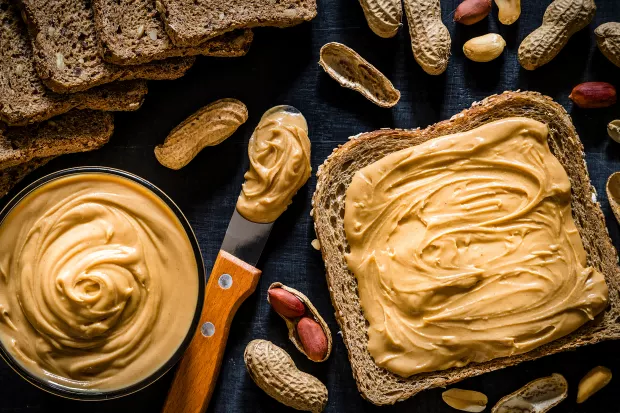Sodium Carboxymethyl Cellulose CMC Production Process and Application

CMC, short for sodium carboxymethyl cellulose, is a water-soluble chemical compound made from natural cellulose. Chemical methods add carboxymethyl groups to the anionic polymer, making it more water-soluble. As a result, the manufactured carboxymethyl cellulose CMC finds extensive usage across diverse industries. It is a versatile product which is used for its ability to thicken, stabilize, and emulsify products to which it is added. In this article, we will examine how CMC is produced and what are its most common applications.
Manufacturing Process of Sodium Carboxymethyl Cellulose CMC
There are multiple processes for manufacturing Sodium Carboxymethyl Cellulose CMC, however, the core process that leads to the formation of the compound requires a reaction of the cellulose with sodium monochloroacetate. This reaction has to occur in the presence of a type of alkaline catalyst in order to successfully achieve the desired product. The following are the key processes used for CMC production:
Water-based Method: The water-based method is one of the main processes used to manufacture sodium carboxymethyl cellulose CMC. The procedure encompasses a range of procedures done systemically, commencing from the triggering stage of the cellulose. This is achieved through disposing of cellulose into a concentrated solution of sodium hydroxide. Sodium mono chloroacetate is then added to the cellulose to undergo carboxymethylation, which would be able to allow the formation of CMC with the formation of sodium chloride. The product was allowed to undergo washing and neutralization steps for the purpose of achieving a specific pH value level and for the removal of residues that were then dried and milled into the desired consistency.
The Solvent Method: The solvent method of making CMC uses some particular organic solvent substances that facilitate the occurrence of the carboxymethylation process, making the technique more productive than water. The widely favored solvents like ethanol and acetone commonly offer the best result.
Precisely, the process starts with the dispersion of cellulose into a solvent system along with water, following an alkalization process. Later, the carboxymethylation process is done where SMCA is added to the mixture and further precipitated to separate the product from the reaction medium. Later, the product is dried out and then milled into the CMC powder for different purposes.
The Slurry Method: The Slurry method is a breakthrough process that has been set to make the CMC manufacturing process practical and reduce the harmful effects that the manufacturing process impacts on the environment. This also reduces the water required to make the slurry with the cellulose and other components. The process begins with creating the slurry, where cellulose is mixed with water. That is followed by alkalization; following that is the carboxymethylation process affected by a very high concentration of other reaction agents. Lastly, the processes of neutralization, washing, drying, and milling, similar to the water-based method are carried out.
Application of Sodium Carboxymethyl Cellulose CMC
Sodium Carboxymethyl Cellulose gum (CMC), because of its versatility and wide range of functions finds application in several industries including the food sector, pharmaceuticals, personal care and cosmetics, textile industry, oil & gas, cleaning agents, and paper industry. The following are some of the key areas where Sodium Carboxymethyl Cellulose is commonly used:
Food Industry: CMC in food industry, finds its functionality as a stabilizer, and thickener highly useful. Because of these properties, the component helps enhance the texture of products such as sauces, dressings, ice creams, bakery goods, beverages, and more. In ice creams and other similar items, the chemical also helps in limiting and controlling sugar from crystallizing. This helps in improving the shelf life of the products.

Pharmaceutical Industry: Of all the sectors, CMC powder uses are in tablet medications and formulations which are found to be most common. Here, it ensures the retention of the ingredients bound to it. Without it, the result may very easily lead to the opposite – the disintegration of the tablet. Other than that, it is used in liquid formulations for thickening and stabilization to ensure an even distribution of ingredients. It is through the formulation of topical creams that their properties in viscosity and stabilization come into place.
Textile Industry: For this industry, CMC helps to add strength and flexibility to the fiber yarn. It was done during the processes of weaving the yarn and its finish so that the durability of the yarn is exactly to specification. It thus adds more control over the yarn being used. – Cleaning agents industry: The applications of sodium carboxymethyl cellulose in the cleaning agents industry are based on its property to remove stains and avoid their fixation on the fabrics during the washing process.
Cleaning Agents Industry: Apart from the determination of the viscosity of the liquid detergents, the stabilizing nature of the CMC chemical is, in fact, also used once more in the liquid detergents formulation. The uses of sodium carboxymethyl cellulose ensure the consistency of these, in this form of adding the CMC ingredient. Its applicability in the products is widespread because of its ability to increase texture in the products and the stability and applicability of such products. CMC has been applied for quite an extended period as a water-binding agent for maintaining the skin moisture produced in various formulations.
Cosmetics and Personal Care Industry: A CMC thickener finds its application now in all these areas because of its film-forming ability and the many functions it performs. Thus, due to such properties, CMC is being used to formulate many products: hair shampoos, creams, lotions, toothpaste, etc. They are popular because CMC enhances the texture of the products and their stability and applicability. CMC is used in various formulations to act as a water-binder and keep the skin moist.
Oil Extraction and Petroleum Industry: In the petroleum and oil extraction sectors, CMC finds extensive application because of its ability to impact the viscosity of the fluid. Because of this characteristic, it is able to enhance the suspension as well as transport of the cuttings towards the surface throughout drilling operations. Moreover, CMC possesses the ability to control the loss of any fluid, which helps in minimizing any infiltration of drilling fluids. As a result of this, it helps in keeping the wellbore stable.
Conclusion
Sodium Carboxymethyl cellulose (CMC) is a complex component that can be used in a wide range of applications, across industries. With many years of experience in the food additives industry, Mondstar has established itself as a trusted supplier. Our extensive expertise in CMC, allows us to offer high-quality, reliable solutions.
Related Posts:
1. What does carboxymethyl cellulose use in food?
2. Xanthan Gum Buying Guide
